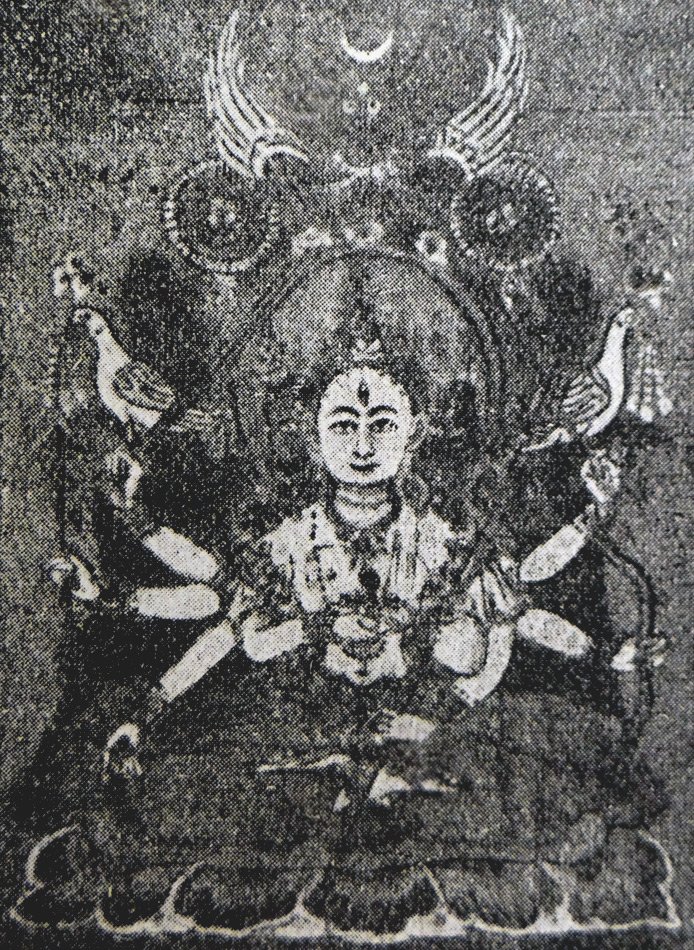The Indian Buddhist Iconography
by Benoytosh Bhattachacharyya | 1958 | 51,392 words | ISBN-10: 8173053138 | ISBN-13: 9788173053139
This page contains an iconography image of Five Protectresses (1): Mahapratisara and represents figure 196 of the book Indian Buddhist Iconography, based on extracts of the Sadhanamala English translation. These plates and illustrations represent either photographs of sculptures or line-drawing reproductions of paintings or other representations of Buddhist artwork.
Figure 196 - Five Protectresses (1): Mahāpratisarā

Fig. 196: Mahāpratisarā
Introduction: The five protectresses [viz., Mahāpratisarā] or the Rakṣā deities as they are called in Tantric works, are popular and well-known amongst the Mahāyāna Buddhists, particularly of Nepal. A manuscript copy of the Pañcarakṣā describing the five Rakṣā deities, their worship on different occasions and their powers, is to be found in almost every Buddhist household in Nepal. [...] The reason why the five Rakṣā deities are popular is to be found
in the Sādhanamālā. According to this authority the five Rakṣā deities [viz., Mahāpratisarā], when worshipped, grant long life. They protect kingdoms, villages and meadows. They protect men from evil spirits, diseases and famines, and from all possible dangers that may befall mankind. [...] All the five deities are worshipped either singly or collectively in a Maṇḍala.
A description of the Pañcarakṣā Maṇḍala occurs both in the Sādhanamālā and the Niṣpannayogāvalī. In both Mahāpratisarā is the central or the principal deity while the four others occupy the four cardinal directions.
1. Mahāpratisarā:
Colour: yellow;
Faces: four;
Arms: twelve;
Symbol: jewel;
The place of Mahāpratisarā is in the centre of the Maṇḍala, and her form is described in the Niṣpannayogāvalī in the following words:
“Mahāpratisarā has a yellowish red halo and is four-faced. The first face is yellow, the right is white, the face behind is blue and the left is of red colour. In her six right hands she holds : 1. the jewel, 2. the discus, 3. the Vajra, 4 the arrow, 5. the sword and 6. the Varada-mudrā. In the six left hands she displays: 1. the Vajra. 2. the noose, 3. the trident, 4. the bow, 5. the axe and 6, the conch. Thus the deity is twelve-armed. Her head is beautified with a Caitya, and she sits in the Vajraparyaṅka attitude”.
The form described in the Sādhanamālā is somewhat different. In this work she has only eight arms instead of twelve. Fig. 196 illustrates a miniature of Mahāpratisarā in the collection of Dr. Evans Wentz. She is also popular in Tibet and her statuette occurs in the Chinese collection of Peiping.
